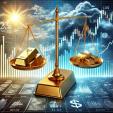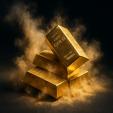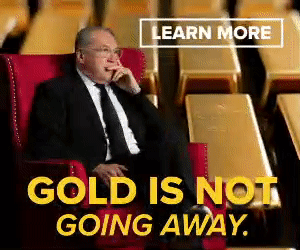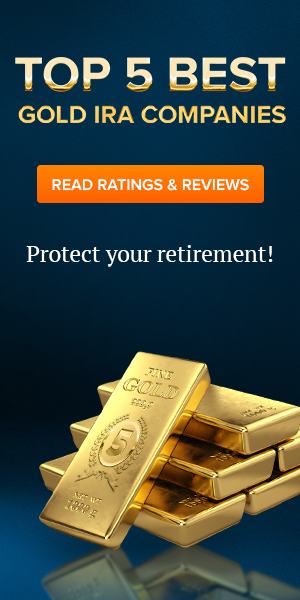Bare Naked Facts About Fed Independence
FED INDEPENDENCE
Chair Powell has been particularly vocal about the Fed’s independence lately. His statements are the result of provocation by some, including President Trump, who have called for various actions including an audit of the Federal Reserve, firing the current Chair (Powell), and abolishing the Fed. The calls for action and the inflammatory rhetoric are usually the result of anger and frustration about Fed economic policies, notably the level and direction of interest rates.
Recently, Powell has targeted tariffs as a variable that could hamper the Fed’s ability to accomplish its objectives and fulfill its responsibilities. That ignores how bad the situation was prior to Trump’s election and inauguration. It also is an attempt to deflect blame away from the Fed for its role in causing inflation, destroying the U.S. dollar, and mismanaging the economy for more than a century.
Meanwhile, President Trump can’t wait to “fire Powell” for “ignoring his demands that interest rates be lowered”. He can’t, so his exasperation erupts in vocal condemnation of the Fed chair. If the tariffs are seen as causing economic disaster, Trump can blame Powell for not lowering interest rates.
Standoff.
The argument over Fed independence needs to be considered in proper context. Keep reading…
ORIGIN OF THE FED
The Federal Reserve System was authorized by an act of Congress in 1913. However, it is not a government agency. The Federal Reserve is a privately-owned institution which is comprised of 12 regional banks. The regional banks are owned by various commercial banks – member banks – who hold stock in the Federal Reserve banks. In other words, the Federal Reserve is a bank which is owned by its member banks – a banker’s bank.
The authorization by Congress vested 1) the power to create money and 2) control of the money supply to the Federal Reserve exclusively. In return for Congressional approval, or rather, to induce members of Congress to vote affirmatively for its inception, the principal figures (elite bankers and banking family “royalty”) behind the creation of the Federal Reserve promised (guaranteed) the United States government in a secret meeting that it would never run out of money.
Publicly, the Federal Reserve System was promoted as a ‘non’ – bank institution in deference to the mistrust and generally negative opinions concerning national banks and the banking elite. Many early Americans were wary of the connection between banks and political power, fearing that a central bank would create an elite class that could dictate economic policy and control the nation’s money supply.
PURPOSE OF THE FED
The purpose of the Federal Reserve is to provide a structured system whereby its member banks can create and lend money in perpetuity. The Fed accomplishes this by continually expanding the supply of money and credit.
The Federal Reserve exists for the benefit of the banks and bankers. Its purpose and motivation is not aligned with the general public interest. The Fed’s objective is to facilitate the ongoing creation of money and loans which generate interest income.
WHERE WE ARE NOW
For more than 100 years, the Federal Reserve has pursued a course of intentional inflation which has brought about a series of economic disasters and near-complete destruction of the U.S. dollar’s purchasing power. The effects of Fed inflation caused the Great Depression of the 1930s and the Great Recession of 2008-2010. Errant Fed policy has erased more than 99% of the U.S. dollar’s purchasing power.
As traditional financial assets continue to slide down a slippery slope, Trump’s tariffs get blamed for causing much of the carnage. This is realistically appropriate to some degree. But the world economy was standing at the cliff’s edge prior to Trump’s election.
Where we go from here might not be a choice anymore.
CONCLUSION
It would take an act of Congress t0 alter or change the Federal Reserve’s control over economic policy and the money supply. Do you think a majority of congressional representatives and senators would vote for a bill that eliminates the guaranteed source of unlimited money which they now spend so freely?
The way I see it, there are several courses of action possible which all lead to the same end result. Here they are…
- Fed continues to operate unhampered as is.
- Congress passes legislation that abolishes the Federal Reserve
- Potential legislation by Congress alters or limits the Fed’s control
Regarding No. 1, we can expect a continuation of dollar depreciation, financial and economic volatility (including recessions and depressions), etc. In other words, more of the same things that have plagued us for the past 112 years under the Fed’s watch care and keeping. Eventually, the end result would be a credit collapse, deflation, and a world-wide depression. This is likely regardless of changes in interest rate policy and the effects of tariffs.
As far as No. 2, abolition of the Federal Reserve would leave a void in money creation and supply which would cripple the world’s economy. The withdrawal symptoms would be horrific. Economies would grind to a halt and a global depression would ensue.
No. 3 presumes a modified approach to reigning in the creature from Jekyll Island. The debate about specifics would increase the uncertainty surrounding this choice and would extend the timeline indefinitely. Regardless of the final version, it would come too late to derail the train of economic terror hurtling towards us now.
Kelsey Williams is the author of two books: INFLATION, WHAT IT IS, WHAT IT ISN’T, AND WHO’S RESPONSIBLE FOR IT and ALL HAIL THE FED
********
















